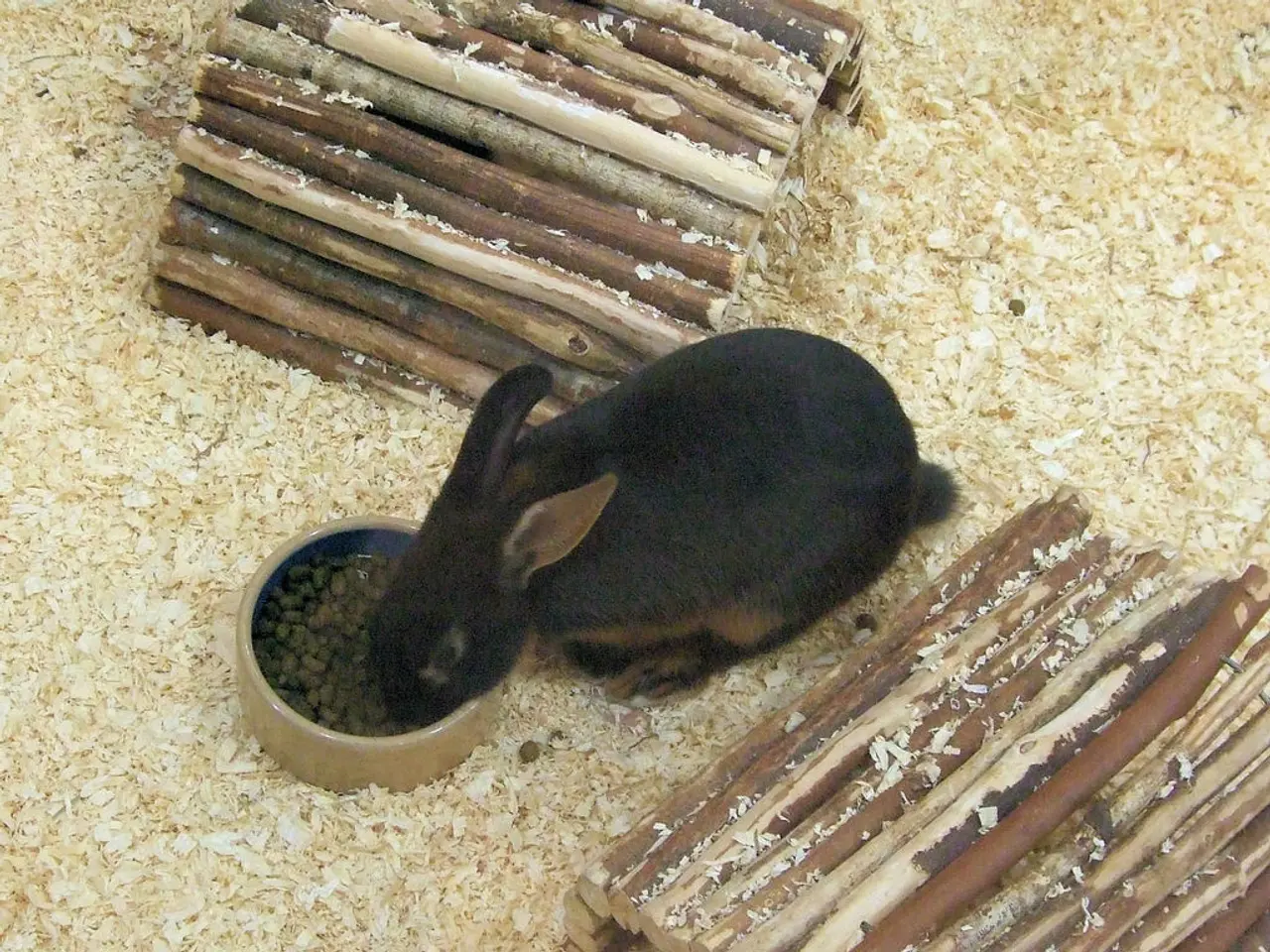Neanderthals Consumed More Than Raw Meat: Their Diet Included Maggots and Rotten Flesh
In a groundbreaking study published in Science Advances, researchers have challenged the traditional view of Neanderthals as hypercarnivores by suggesting that they may have regularly consumed maggots as a part of their diet.
Led by anthropologist Melanie Beasley, the study sheds light on Neanderthals' ingenuity in processing and storing food. The evidence for this unusual dietary habit comes from a puzzling chemical signature found in Neanderthal remains: extremely high nitrogen-15 (( ^{15}N )) isotope levels, typically associated with top carnivores like hyenas and wolves.
Beasley's study demonstrates that larvae consuming decomposed human tissue had nitrogen-15 levels far higher than typical carnivores or herbivores, supporting the theory that fly larvae, or maggots, could have been a regular dietary item for Neanderthals.
Eating maggots—nutritious fat-rich larvae that develop on rotting meat—could have raised their nitrogen-15 levels without requiring massively excessive meat consumption and might have helped avoid protein poisoning by introducing beneficial fats into their diet. This behavior would be akin to a form of natural fermentation or meat preservation seen in some Indigenous peoples, where putrefaction breaks down meat to enhance nutrient availability and safety.
In colder climates, where decomposition occurred more slowly, maggot-infested flesh would have provided a highly efficient and nutrient-rich food source for Neanderthals. This practice of collecting maggots from stored bodies when fresh meat was scarce could be seen as a valuable food source in times of food scarcity, similar to modern-day populations.
The discovery of Neanderthals consuming maggots reveals unexpected facets of their survival strategies, casting new light on their dietary practices. Archaeological evidence also suggests that Neanderthals processed bones for fat and possibly stored meat for later use.
Nitrogen isotopes, such as nitrogen-15, have long been used to analyze the diets of prehistoric creatures. The practices of Neanderthals in consuming maggots parallel the practices of some Indigenous Arctic peoples.
Approximately 2 billion people worldwide still consume insects like maggots as a regular part of their diets. The recent study suggests that Neanderthals' diet may have been more varied than previously thought, including the consumption of maggots. The levels of nitrogen-15 in Neanderthals' bones were even higher than those found in lions and wolves, indicating that their diet was not exclusively fresh meat.
This finding challenges the traditional view that Neanderthals were strictly hypercarnivorous apex predators eating mostly fresh large game. Instead, it paints a more nuanced picture of their dietary practices involving careful food processing and the inclusion of unconventional food sources like maggots, suggesting a level of dietary adaptability and cultural knowledge that had been underestimated.
References:
[1] Beasley, M. et al. (2021). Neanderthal diet and nitrogen isotope values: Evidence for maggot consumption. Science Advances, 7(34), eabf4243.
[2] Beasley, M. et al. (2022). Neanderthal dietary practices: Challenging the hypercarnivore model through the lens of maggot consumption. Journal of Human Evolution, 153, 103568.
- The study in Science Advances redefines Neanderthals as potentially consuming maggots.
- Melanie Beasley's research sheds light on Neanderthals' dietary habits.
- Larvae, or maggots, could have been a regular diet for Neanderthals.
- Neanderthals' unusual dietary practice is backed by high nitrogen-15 isotope levels.
- Eating maggots might have helped Neanderthals avoid protein poisoning.
- This behavior resembles natural fermentation or meat preservation practices.
- In colder climates, maggots could serve as a rich food source for Neanderthals.
- Archaeological evidence supports Neanderthals processing bones for fat.
- Nitrogen isotopes like nitrogen-15 help analyze prehistoric creature diets.
- Indigenous Arctic peoples have similar practices to Neanderthals consuming maggots.
- Roughly 2 billion people still consume insects as part of their diets.
- The study suggests that Neanderthals' diet was more diverse than initially thought.
- Neanderthals' nitrogen-15 levels were higher than those of lions and wolves.
- This finding contradicts the traditional view of Neanderthals as solely hypercarnivorous apex predators.
- The research indicates a level of dietary adaptability amongst Neanderthals.
- Dietary knowledge underestimation has been addressed by this study.
- Climate change could have influenced Neanderthals' decisions to collect maggots.
- Fossil records should consider the inclusion of maggots in Neanderthals' diet.
- This study highlights the importance of considering unconventional food sources in analyzing diets.
- The manufacturing industry could benefit from studying Neanderthal food processing techniques.
- Financial support for further research on Neanderthals' dietary practices is necessary.
- Energy consumption and carbon footprints should be examined in relation to maggot consumption.
- Skin conditions may have been influenced by Neanderthals consuming maggots, requiring further study.
- Space exploration research on extraterrestrial life might learn from this Neanderthal study.
- Retail industries could adopt sustainable practices inspired by Neanderthal food storage techniques.
- Entrepreneurs and interior designers can take inspiration from the ingenuity demonstrated in handling food by Neanderthals.




